Today's Tidbit... Paul Newman, Football, and The Sting
This story began with a serendipitous moment. While reviewing one newspaper article, I happened upon one on the same page that concerned members of the 1935 football team at Carbondale Normal, now Southern Illinois University, who were booted from the football team for smoking, presumably tobacco.
That got me thinking about the many reasons players have been permanently platooned in the past, so I set off in search of the same. While I found some good stuff and will publish a future article on the topic, I became sidetracked by a story about Paul Newman, the actor, being thrown off his college football team for involvement in a brawl. It's Oscar season, and my interest was piqued, so I pursued the Newman story.
Some readers have not had the good fortune of living as long as I have, but you should know that Paul Newman won the Best Actor Oscar in 1986 and earned eight other nominations. The guy had chops and pretty blue eyes. Among his more popular movies was The Sting, released in 1973. Newman and co-star Robert Redford played a pair of grifters who staged a complicated plot to steal a load of cash from a 1920s Chicago mob boss. The truth is often unclear throughout The Sting, and the same applies to the tale of Newman's brawl-shortened football career.
Newman grew up in Shaker Heights, Ohio, a Cleveland suburb. After serving in the Pacific during WWII, he entered Kenyon College in the fall of 1946. That fall, he supposedly joined and was kicked off the football team.
Stories floated around in the 1950s, claiming that Newman attended Kenyon on an athletic scholarship and played football, basketball, and baseball. Others said he swam and ran the student laundry, all while starring on stage. Here's an example interview from 1958, when Newman was an emerging star.
Newman's gridiron and other sporting exploits seem to be stories generated by publicists in the mid-1950s trying to position the emerging star as an All-American boy with a rough patch or two. However, Newman played along and continued doing so, as seen in a quote from the memoir published by his wife, Joanne Woodward.
To tell you the truth, though, aided by the new stature I'd attained in the Navy, what I most enjoyed was being on the college's football squad.
Of course, when I found myself in disciplinary trouble, my plans had to change.
'The Brawl That Kicked Off Paul Newman's Acting Career,' Real Clear, October 28, 2022
So, while there may be some truth to Newman's story, there is at least a strong dose of fiction. If Newman "most enjoyed" his time on the football team, he did not enjoy it for long. The brawl, which we will get to shortly, occurred after the second game of his freshman year. Moreover, the program for that game against Marietta does not list Newman on Kenyon's roster, so he was either kicked off the team before the second game, on the scout team, or otherwise not a heavily used player, and none of those scenarios seem most enjoyable.
During that first semester, the Kenyon Collegian listed Newman as a contributing reporter, and his only other appearance was in a photograph illustrating the school's crowding due to the influx of veterans.
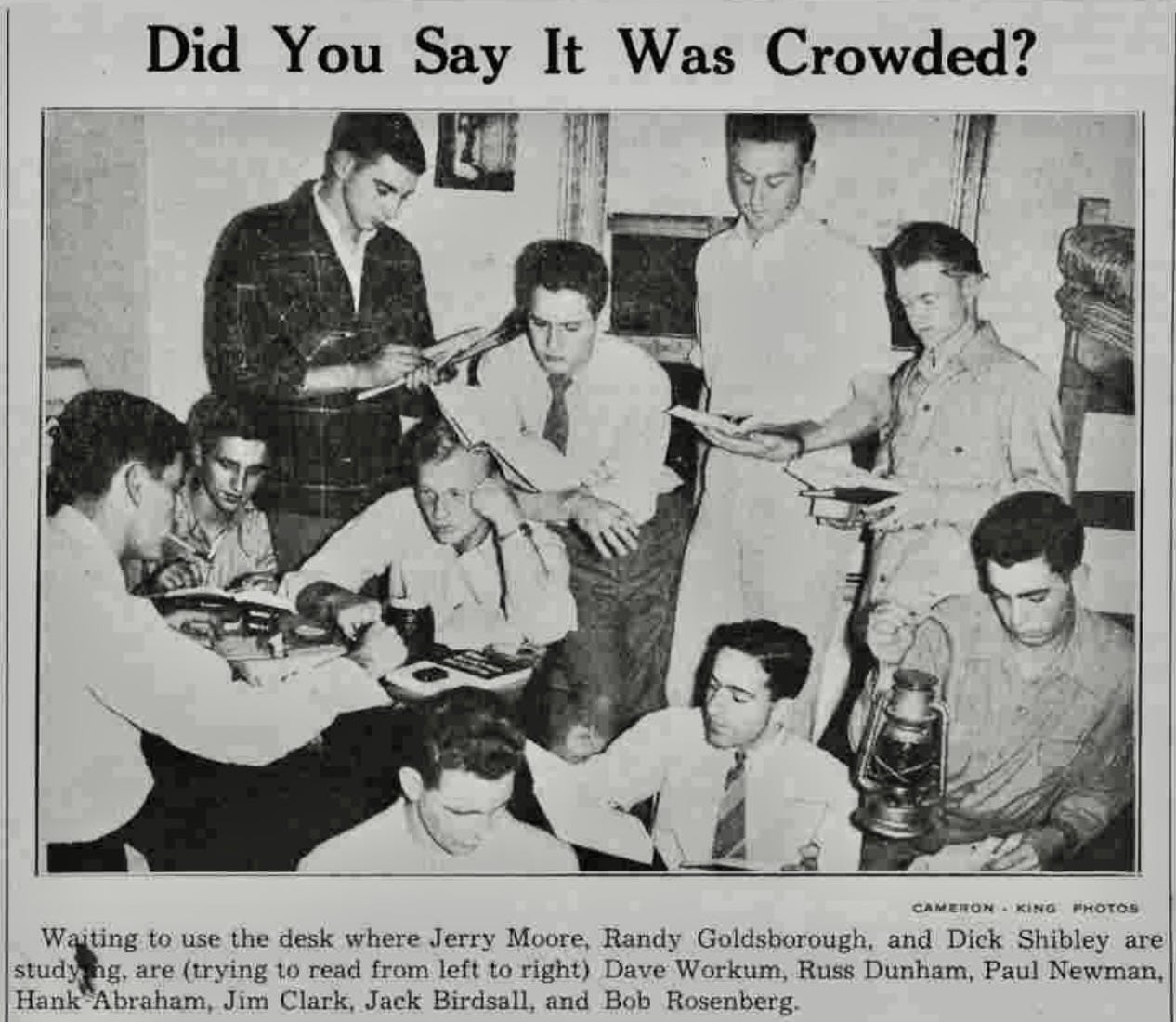
Now, about that brawl. The brawl certainly occurred, and Newman was in the mix of what appears to have been a town and gown bar fight in which non-uniformed police later intervened, leading to the arrest of several collegians. Newman did not get arrested at the bar, but an arrestee tossed Newman his car keys and asked him to drive the car to the police station. Newman did so and when he went inside to drop off the keys, the desk sergeant noticed Newman's knuckles were in rough shape for a college boy, so Newman ended up in the pokey as well.
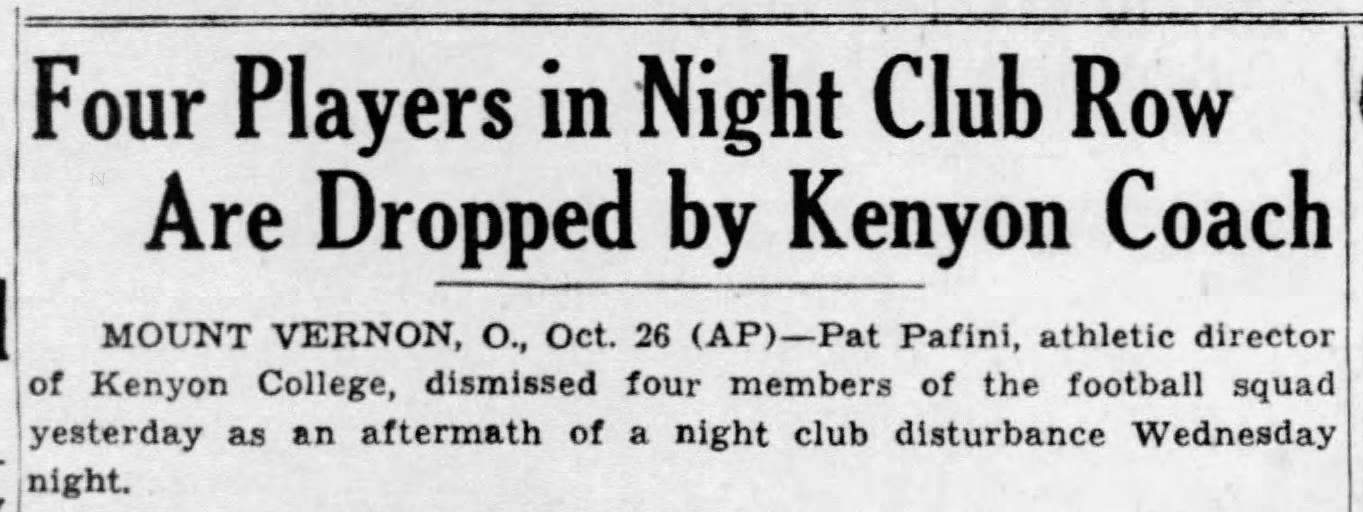
Period articles consistently identify four of the six arrested students as football players while two others were not, one of the nots being Newman.
So, was Newman on the football team or not?
Newman does not appear to have played football or anything else in high school. A retrospective printed in the 2004 edition of the Shaker Heights High School yearbook indicates Newman focused on the stage while there.
Newman also pooh poohed his athletic exploits when first gaining fame, telling a reporter he had never been a varsity man, suggesting the publicity people had told tales on his behalf.
On the other hand, a week or two before graduation, Newman published an autobiographical account in the Kenyon Collegian describing his money-making joint venture with the local laundry, his time on the stage, his many drinking exploits, and his time on the football team and in jail.
It appears then that Newman arrived on campus and tried out for the football team, but for one reason or another, was not a varsity player by the second game of the season. His involvement in the brawl ended any hopes for gridiron glory, directing him toward a pro career on another stage.
As with Newman's portrayal of Harry Gondorff in The Sting, truth and fiction are difficult to distinguish in the story of Newman's football days. However, whatever chips he may have had were cashed in early, and he found other opportunities to play his Cool Hand.
Postscript: I was asked about Robert Redford’s football career and, while I understand he played in high school, I could only find an image of him as a sophomore on the track teams at Van Nuys HS.
Click Support Football Archaeology for options to support this site beyond a free subscription.


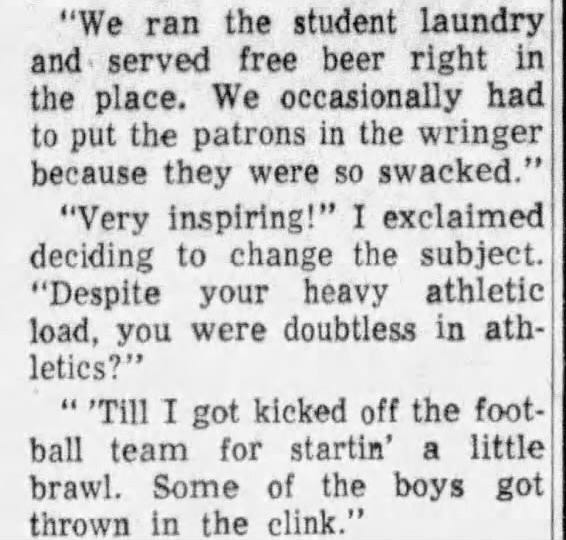
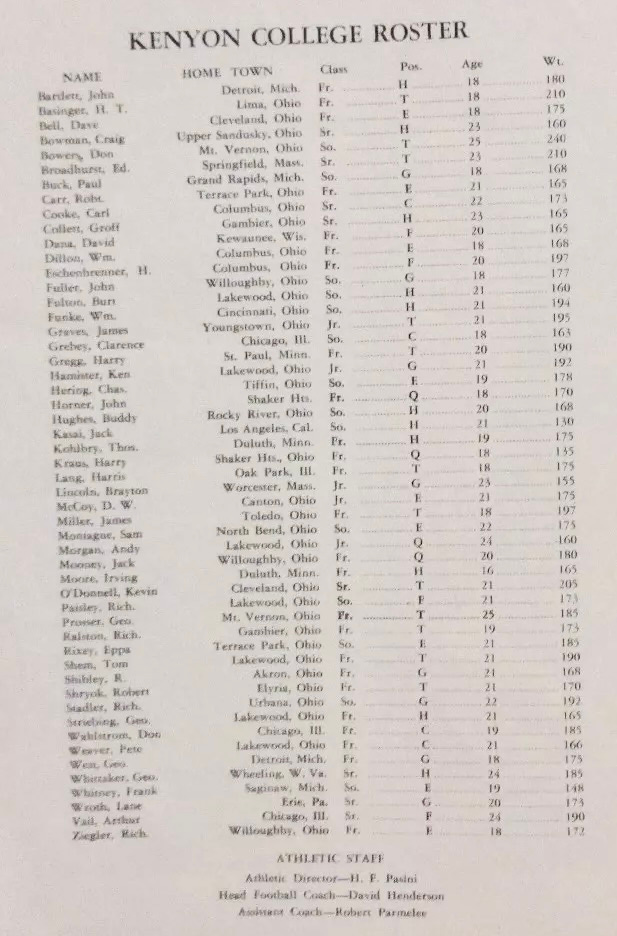
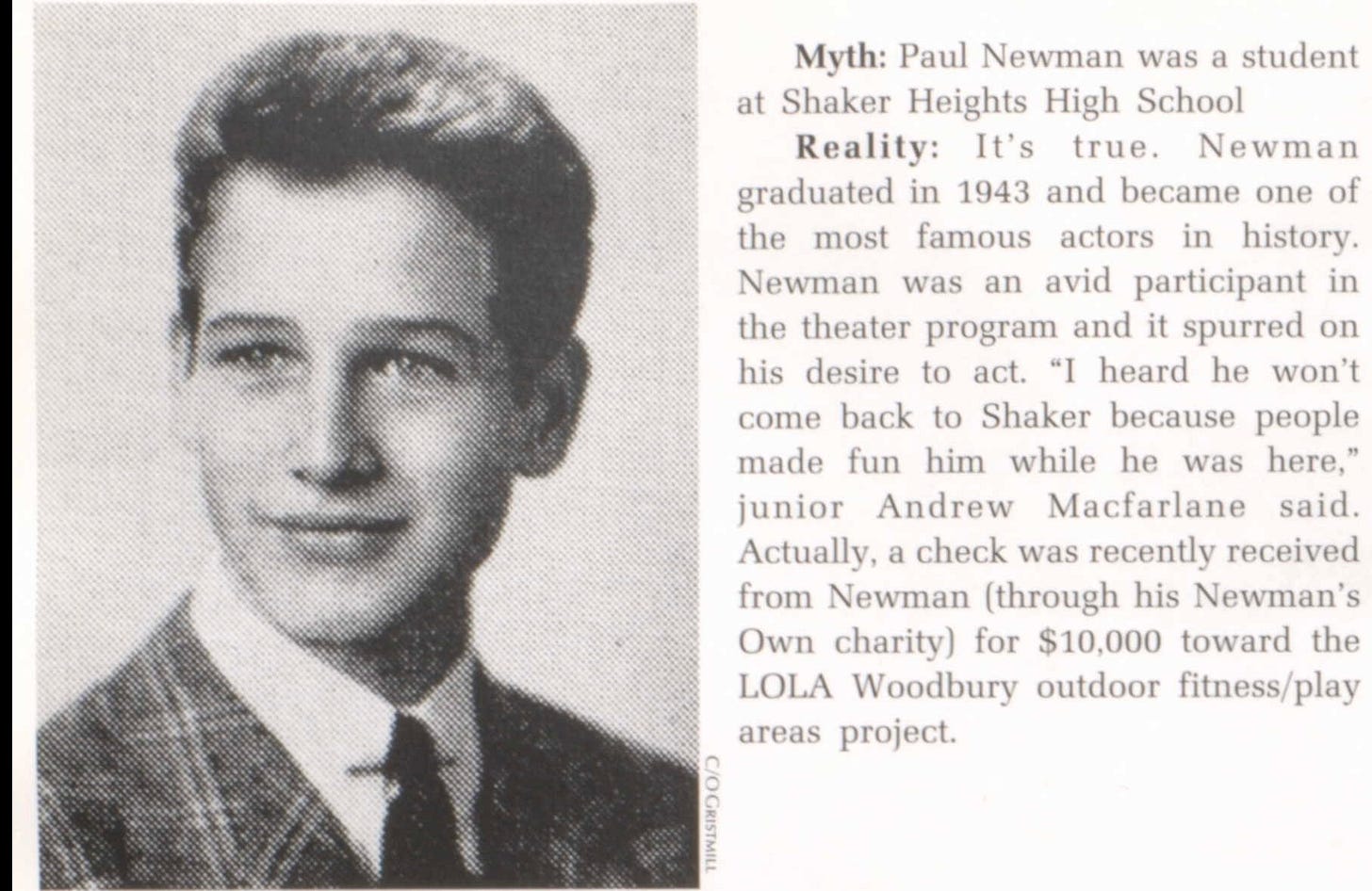
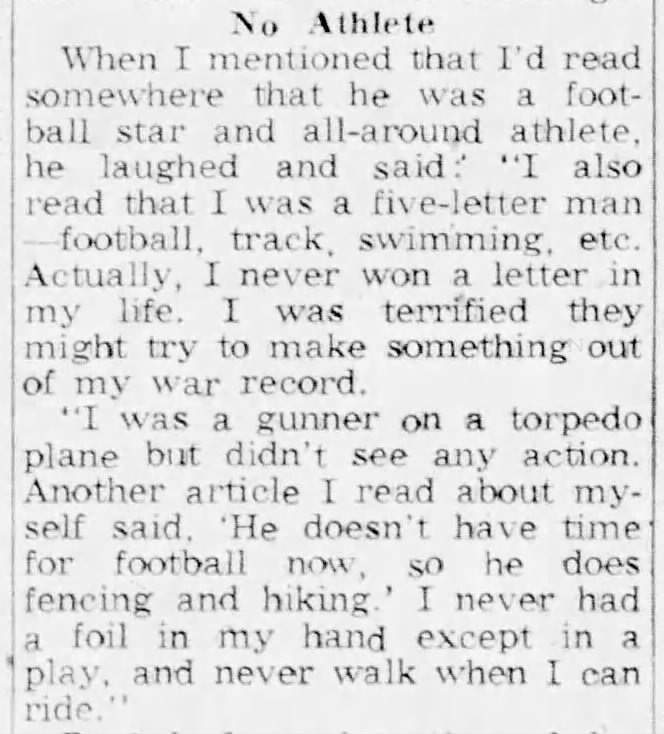
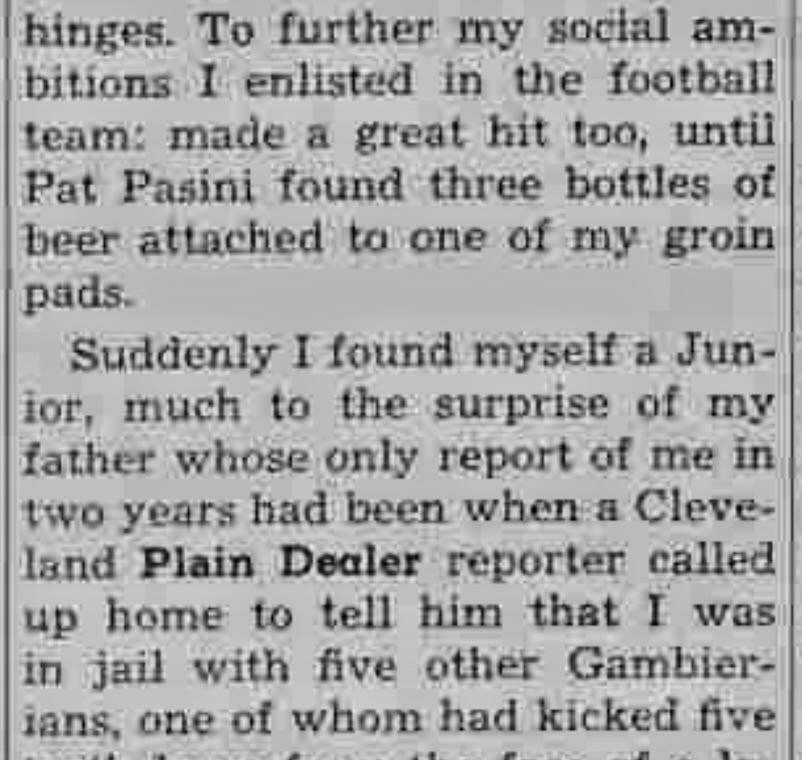
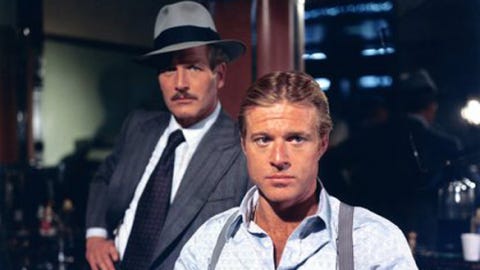
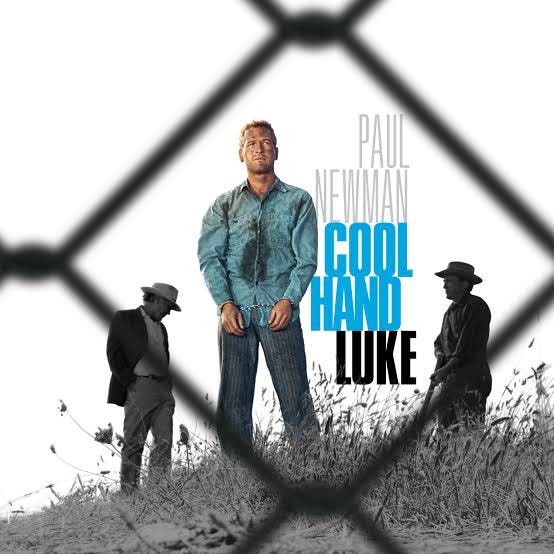
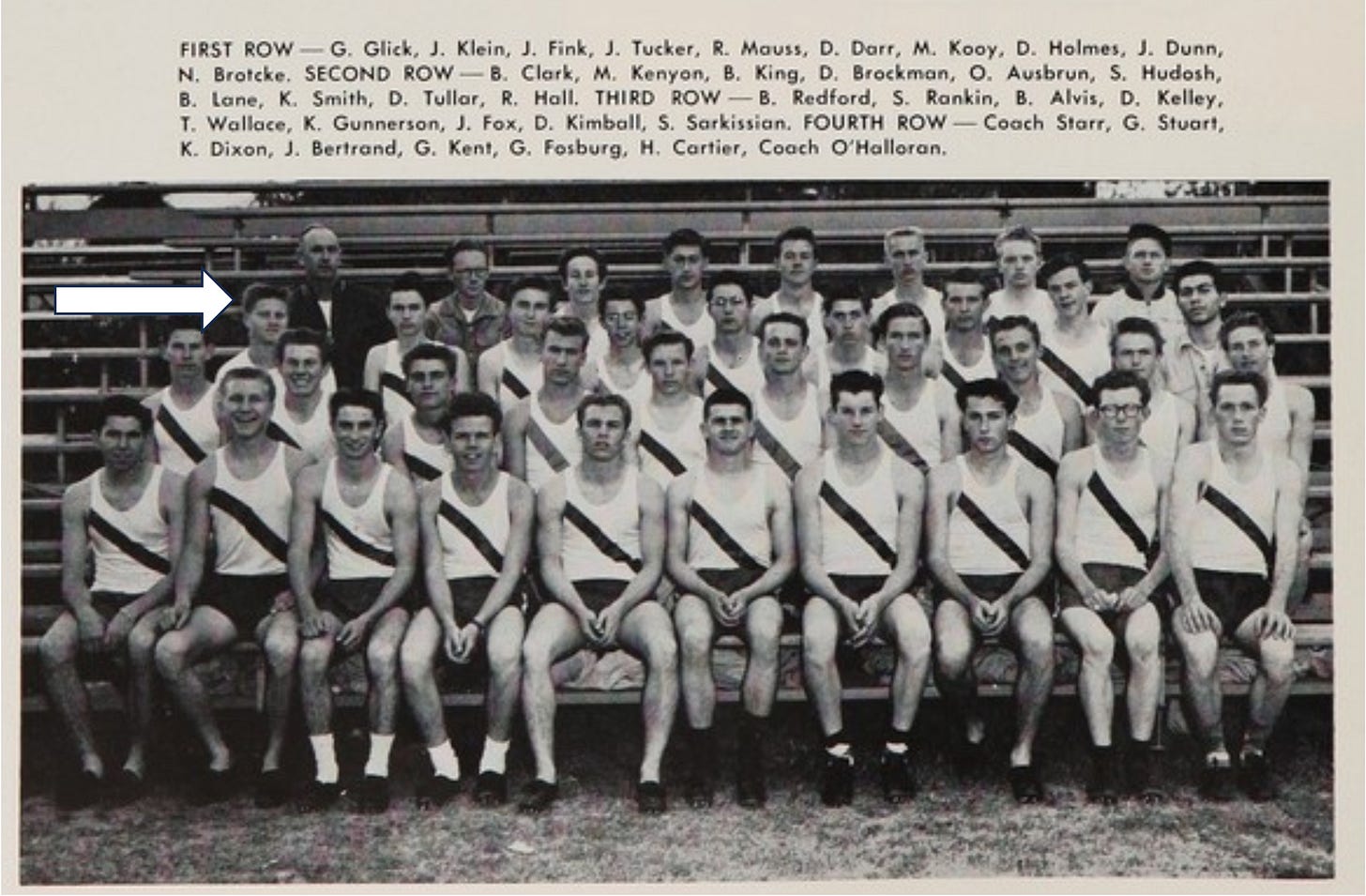
In the photo from Kenyon, they had the three at the table and everyone else was left to right. So Newman is third from the left - the person next to him, then the guy sitting on the floor in front, then him.
Ol' Blue Eyes was too busy playing old-fashioned positional hockey to play football.